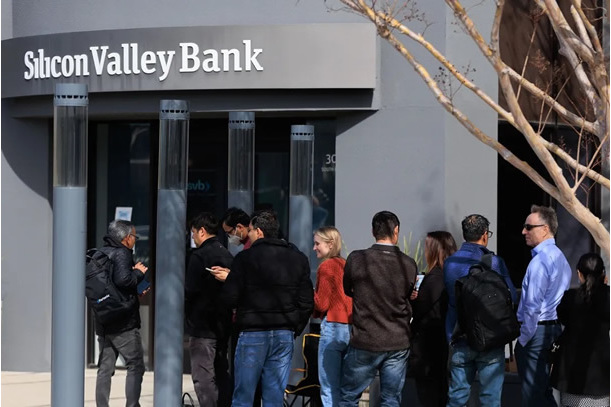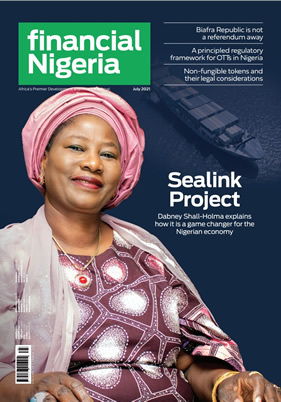Lessons from the SVB collapse

Feature Highlight
Comprehensive deposit insurance must also be part of the picture, and it is clearly better to have such a system in place before the fact.
Summary: Although Silicon Valley Bank was not deemed to be systemically important, its insolvency forced the US Federal Reserve to head off systemic contagion and exposed the inadequacy of the FDIC’s partial deposit insurance regime. The financial-stability framework adopted after the 2008 crisis obviously needs another overhaul.
Does Silicon Valley Bank’s collapse reveal a fundamental weakness in the current financial-stability framework, or does it merely point to a localised failure of supervision?
By jeopardizing many prominent, high-growth companies in the tech sector, the bank’s failure certainly put significant political pressure on the US Federal Reserve. But the Fed’s emergency weekend intervention – when it provided a comprehensive deposit guarantee and extended loans to other banks, valuing their collateral of US Treasury bonds at par – suggests that it was genuinely concerned about financial contagion, too. And now, the recent scare around Credit Suisse has forced European banking regulators to mull the same questions.
Obviously, there was a failure of supervision. SVB’s insolvency came about because of its entirely foreseeable exposure to rising interest rates. It had used customer deposits to fund investments in a portfolio of US Treasuries that were poised to decline in value when the Fed started tightening its monetary policy a year ago. The problem was neither credit risk nor liquidity risk; rather, it was an obvious form of market risk. The Fed’s usual stress tests might have spared supervisors the embarrassment, except that SVB was exempted from this requirement, owing to a 2018 legislative change that increased the threshold for participation from $50 billion in assets to $250 billion. SVB had $209 billion in assets when it failed.
This gap suggests that there may indeed be a deeper problem with the financial-stability framework. Since the 2008 global financial crisis, regulators on both sides of the Atlantic have attempted to strengthen financial-sector regulation and supervision within the confines of a broadly consistent framework. The two key features are enhanced supervisory powers and capabilities, with a particular focus on institutions identified as being “systemically significant” and partial deposit-insurance schemes, which are designed to protect deposits up to a certain amount per depositor.
SVB was not deemed systemically important. Yet not only was the Fed forced to mount an extraordinary emergency intervention to head off systemic risks introduced by its collapse. It also effectively acknowledged that the FDIC’s partial deposit insurance regime (alongside new rules on bank resolution) was inadequate for reassuring depositors; nothing less than comprehensive deposit insurance would do. Given that these conclusions were reached after the fact, it is worth asking whether we ever would have come to them in the absence of a sudden crisis.
Of course, the “systemic importance” logic of the post-2008 regime may have had more to do with the difficulty of unwinding massive institutions like Lehman Brothers than with concerns about their greater propensity to cause crises. After all, financial crises can start with institutions of all sizes, and one of the areas where there has been the most progress since the financial crisis has been in establishing more detailed and robust rules for bank resolution.
But the SVB saga suggests that the post-2008 reforms – strengthening capital-adequacy requirements, establishing rules for bank resolution (with bail-ins for bondholders), drawing up “living wills” for banks – were not enough. Comprehensive deposit insurance must also be part of the picture, and it is clearly better to have such a system in place before the fact.
To be sure, it looks as though the Fed’s intervention was primarily motivated by a concern about financial contagion, rather than by the need to protect corporate depositors in a strategically important sector. But in the case of SVB’s subsidiary in the United Kingdom, the reverse appears to be true. Although no taxpayer money was spent to rescue depositors (SVB UK was purchased by HSBC for £1), one still might ask whether this is the best way to implement an industrial policy or to protect a critical sector.
In the case of the United States, we have witnessed yet another episode in which the central bank has been called upon to use its balance sheet to protect the financial system. Although the crises of the last decade may have had different origins, the central bank fix has been similar. In all cases, the government is effectively acting as the insurer of last resort.
This may be inevitable, and even desirable, in the sense that it provides the public good of financial stability. But the government’s expanded role forces us to ask whether it would not be more efficient to bypass the banks altogether by allowing depositors – both retail and corporate – to keep their funds at the central bank, through the issuance of a central bank digital currency. That would be a comprehensive form of deposit insurance ex ante.
More broadly, if some sectors of the economy are going to be protected no matter what, we should establish a framework for doing that ahead of time, rather than bailing out uninsured depositors after the fact. These are among the most important lessons that policymakers should take from this latest crisis.
Lucrezia Reichlin, a former director of research at the European Central Bank, is Professor of Economics at the London Business School and a trustee of the International Financial Reporting Standards Foundation. Copyright: Project Syndicate.
Other Features
-
-
What I learned after studying 80 innovation programmes in Africa
My team and I are in the process of designing an innovation and entrepreneurship programme which we hope accelerates ...
-
Nigerian power sector: resolving liquidity concerns
Given financial pressures on the power generation companies and distribution companies, upward tariff revisions ...
-
India has arrived
A founder of the Non-Aligned Movement, India has plenty of experience navigating precarious ...
-
The new CBN foreign exchange code and its implications
With the introduction of the CBN FX code, Nigeria has aligned with leading financial jurisdictions, such as the ...
-
FIRS: Tax revenue as Nigeria’s new ‘crude oil’
President Tinubu deserves to be hailed for the huge jump in the shareable FAAC allocations which has continued an ...
-
DeepSeek and the future of finance
The DeepSeek disruption is a clear signal that the AI landscape in financial services is about to undergo a seismic ...
-
How to sell USDT for cash in Nigeria: A comprehensive guide
Selling USDT for cash in Nigeria doesn’t have to be complicated.
-
A review of the national tax bills
The four tax bills signify a pivotal shift in Nigeria’s tax framework, focusing on critical areas of revenue ...
Most Popular News
- Artificial intelligence can help to reduce youth unemployment in Africa – ...
- Tariffs stir inflation fears in US but offer targeted industry gains ...
- Nigeria records $6.83 billion balance of payments surplus in 2024
- Tinubu appoints new Board Chair, Group CEO for NNPC Limited
- CBN net reserve hits $23.1 billion, the highest in three years
- Soaring civil unrest worries companies and insurers, says Allianz















